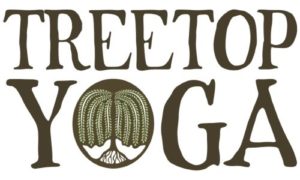There’s a lot of misunderstandings when it comes to what yin yoga is and what its intentions are. I’ve seen it advertised a few times as a “deep stretch” class, when in fact, yin isn’t intended to stretch the big muscles of the body. During this practice you are not stretching, but rather “stressing” the tissues of the body. To further explain, before you start stressing out…
In the yin yoga practice, you hold poses for several minutes at a time with the targeted areas of the body relaxed. This will bring the focus into the tissues of the joints as well as the fascia, and cause them to experience stress. This is a good type of stress, and as a result, the muscles and fascia will become healthier and more hydrated. Fascia can be thought of as a spider web that encloses the entire body’s muscular system. You may read this and remember a few vinyasa classes where the teacher strongly advised you not to dump weight into the joints, and in that style of practice they are absolutely right, however yin is a very still practice and the levels of intensity are at a healthy 2-5/10. This level of intensity, combined with time in which poses are held, promote a healthy range of motion.
The energy of a yin class is calm and still. This is a very introspective practice where the connection between between body, mind and energy bodies is heightened. When you are tuned in to the physical sensations that occur when poses are held at length, you may also notice an intensity in your mental and emotional experience. This can lead to some seriously noticeable after affects when the practice is concluded. Sometimes I leave a yin practice feeling relaxed and comfortable, other times I leave quite emotional from “issues in the tissues” being moved around. From a teaching standpoint, I have noted that some students experience stronger physical, emotional and energetic shifts from their yin practice as compares to both vinyasa and restorative yoga practices.
There is a large energetic component in yin yoga. Many practitioners will incorporate traditional Chinese medical theory to the practice. It is believed that the meridian system, or points of acupuncture, exist in the bodies tissues. These are various points and channels that nourish various organs. As the practitioner stresses the tissues along targeted meridian lines, qi (energy, life force) is encouraged to flow. Each meridian can have a different effect on both body and mind. I have come out of bladder/kidney based practices feeling tired, heart/small intestine feeling relaxed and happy, and liver/gall bladder feeling an intense emotional release. How you experience a yin class is unique to what is going on in your body physically, mentally, and energetically. In all energy work, sometimes the changes and effects are subtle or difficult to notice, other times they are pronounced and immense.
This practice lends the beautiful gift of learning to find stillness during moments of intensity. Not all yin poses are intense, some are rather delicious to be in (again, it all varies from person to person!) This style of yoga perfectly balances the yang (masculine, solar) lifestyle in which we live with a feminine, reflective and passive outlook on the asanas. Treat yourself on your rest days to this rejuvenating practice. It’s powerful, it’s balancing, and it really is the other half of yoga.
Written By: Hilary Richard, Treetop Yoga Teacher

